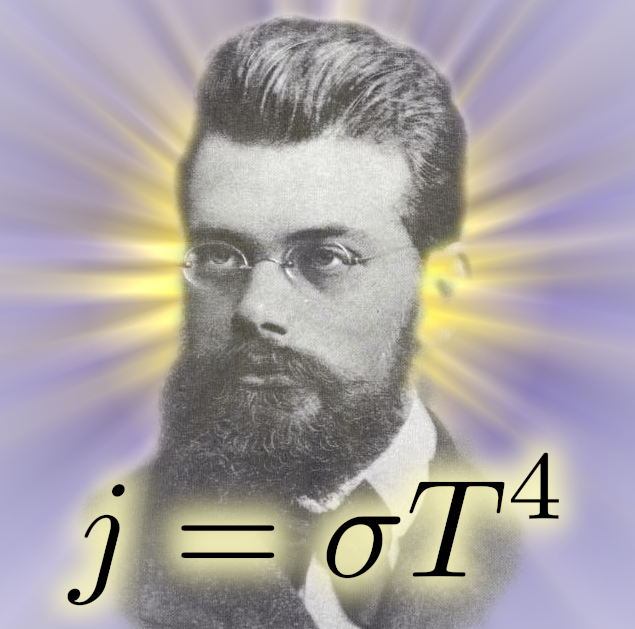
Markus Deserno
@MarkusDeserno
Followers
9,766
Following
255
Media
1,190
Statuses
14,768
Theoretical and computational biophysicist @CarnegieMellon . Loves lipid membranes. (he/him) 🇩🇪🇺🇸
Pittsburgh, PA
Joined April 2020
Don't wanna be here?
Send us removal request.
Explore trending content on Musk Viewer
FEMA
• 1463443 Tweets
2NE1
• 319490 Tweets
Joker
• 168200 Tweets
#XiaoZhan33rdBDAY
• 158308 Tweets
天使の日
• 131059 Tweets
Mancuso
• 92450 Tweets
Campana
• 73660 Tweets
名探偵ピカチュウ
• 56321 Tweets
Grammys
• 51543 Tweets
AFFAIR EP6
• 37538 Tweets
Ocho
• 35966 Tweets
Bielsa
• 34801 Tweets
Pogba
• 34283 Tweets
Trump Bible
• 32116 Tweets
Ramírez
• 24816 Tweets
Uyuşturucu
• 20802 Tweets
HAPPY 2nd BIRTHDAY SMILEY
• 19380 Tweets
Best Record
• 17989 Tweets
マジルミエ
• 16965 Tweets
栞子ちゃん
• 13560 Tweets
菅野メジャー
• 12189 Tweets
Last Seen Profiles
@SneakerNerdJake
@Oliver_Stacks
Pennies are no longer made from pure copper, for that very reason.
5
3
816
The movie above shows the “Kugelbrunnen” (“sphere fountain”—it sounds more charming in German!) at the Hugenottenplatz in my hometown
@erlangen_de
. Since about 1997 a granite sphere with a diameter of roughly one meter floats on a bed of water.
2/13
10
16
661
@MoneyTodayShow
@mattyglesias
The most powerful man in the world, with his own press department, gets thrown off a social media app after repeatedly violating their terns of service, and then whines about being censored…
Look, I’m no idiot. I know a bullshit argument when I see it.
2
4
400
@mscots41
It’s the linguistic equivalent of this painting of a vase, which shows a bunch of dolphins.
21
9
358
What we're looking at here very much reminds me of the phase transition in nematic liquid crystals. It LOOKS as if entropy goes down by shaking, but that's wrong: the nails can explore MORE phase space once they align. (Molecular) nematic ordering was first explained by Onsager.
19
41
374
Wow. With just a single tweet,
@martinmbauer
brought out all the retired engineers with deep theories about light-quantum gravicentric black hole neutrino conscious protovariable simultaneous post-Einsteinian hyperdimensio quark string plonk crank poof zock quaffle sprock.
46
20
360
@SeamusBlackley
I really don't understand why this cannot be stopped. We do not have to kill innocent people. Nobody forces our hands. What is wrong here?
29
15
359
@POTUS
Because that honor system works, right? Because anti-maskers have been so reasonable over the last year? Because I can tell vaccination status from the glimmer in their eyes?
I wonder whether you guys have thought this one through.
161
21
328
@DrGuiton
I am so very sorry for you! This is painful. It is also borderline criminal negligence by the university, who apparently has no sense for how valuable these things are. If you express this in person years and lost grants, explain to your university that it cost you millions. 😢
1
2
318
@keenanisalive
That’s because there’s a Jacobian in polar coordinates:
dA = r dr dφ ,
and that extra r messes with the density. But we can rewrite this:
dA = ½ d(r²) dφ .
The trick is hence to sample uniform in φ and uniform in u=r², such that r=√u. That’s exactly your algorithm.
3
21
293
I’ve asked my students of Physics 3
@Physics_CMU
to create memes that reflect their first 2 weeks of learning Special Relativity—and oh boy am I impressed with their creativity and amazing sense of nerdy humor! Let me share some of their awesome creations with you!!!
10
33
277
@TimMarcin
A young couple posts a dance routine on TikTok, and the Twitter vultures congregate and compete over who can most creatively shit on them.
Seriously, you folks are awful. A perfect illustration why some corners of Twitter are just a burning hellscape of gratuitous hate.
21
2
253
@ling_sprenger
Would it be weird to tell a painter you loved their painting? To tell a writer that you really enjoyed that book? A musician that that was a great performance? Who thinks scientists don’t also appreciate a heartfelt compliment? It’s OK. It’s normal. It’ll make them happy! Do it!
2
12
255
@SneakerNerdJake
@Oliver_Stacks
Pennies made 1983 or later are made of 97.5% zinc and plated with a thin copper coating.
I recall this oddity because the "can't we make more money by melting copper pennies" strategy is a homework problem I often give to my gen-ed physics students 😉
1
1
238
@WFKARS
Same with pears:
Too hard
Too hard.
Too hard.
Too hard.
Too hard.
Too hard.
Too hard.
Too hard.
Too hard.
Too hard.
Too hard.
Too hard.
Too hard.
Too hard.
Too hard.
Too hard.
You briefly step out of the room.
Mush.
Mush.
Mush.
Mush.
Mush.
Mush.
11
1
236
@BJonani
@EricTopol
So what? What if a great protection doesn’t last forever? What if going to the dentist doesn’t mean you would never have to go again? What if taking a shower now still doesn’t protect you from getting dirty tomorrow? What if you still get hungry after eating?
11
21
227
Woot! Our paper on cholesterol distribution in asymmetric membranes, spearheaded by Malavika Varma (not on Twitter 😭) is online in
@BiophysJ
!
Obviously, time for a Tweetorial!
Article Link (Free for 50 days!):
1/21
3
43
197
@tommiedotjpg
Lest we forget: this dude also proudly presented a proof to the world that 1×1=2.
This is the proof to the World of Science and Mathematics that 1x1=2.
#mathematics
#worldofscience
@rollingstone
#proof
1K
2K
4K
13
21
187
@TamasGorbe
Yes! And the same is NOT true for the hyperbolic inverses arsinh(x) and arcosh(x), which instead correspond to AREAS—“area sinus hyperbolicus” etc. Which is why I have always hated Mathematica’s incorrect naming of these functions as “ArcSinh[x]”.
4
8
190
@doctorow
@FerrisEmil
@fantagraphics
@MidsummerScream
@feliciaday
@RainaTelgemeie1
@ChuckTingle
I'm sorry. I'm SOOO sorry. Really. 😭😂😭😂
0
21
186
So much for today. If you liked this thread and think it might be useful for others to learn about this topic, consider retweeting the first tweet. Thanks a lot for your interest! 🙏
29/29 and END
16
23
184
@stianchrister
@CossackLaughing
@amalieskram
Precisely. They are pimping out female athletes for lecherous male audiences in pursuit of ratings and advertising revenues. These skimpy pants serve no athletic purpose whatsoever. It’s sickening to see this blatant sexism actually being defended in this thread.
1
6
168
📣 Big job announcement:
@CarnegieMellon
is searching for 3 (!) faculty in the areas of Cellular Biophysics and Quantitative Biology, a cluster hire to join
@Physics_CMU
,
@CMU_Bio
, and
@CMUCompBio
. Please spread the word!
Let me explain a a bit more:
2
103
149
As a lipid geek, I have to share this interesting little thread about the lipid nanoparticles hosting the mRNA vaccines of Pfizer and Moderna. 😊
@moderna_tx
mRNA vaccine is finally arriving in Australia. It is very similar to the
@BioNTech_Group
/
@pfizer
#mRNA
The main difference is in the lipid nanoparticle (LNP) that deliver the mRNA. This is both in terms of the lipid chemistry and how the LNP's are formed 1/10
3
88
277
9
26
139
@dynamicsymmetry
We Germans called it “vorauseilender Gehorsam.” A bit like “anticipatory obedience”, but more striving, eager, and willing.
Trust us, that didn’t work out well.
4
18
135
@allahpundit
This is what happens when unmoored opinions are considered just as legitimate in public discourse as verifiable facts and knowledge. But a disconnect from reality is ultimately dangerous, because reality doesn’t care about your opinion.
3
9
127
@equalityAlec
Can you maybe help me understand this: why does NYT regularly get away with this? Many of its readers truly care about objective journalism. They don’t like to be manipulated. And yet, here we are. What is the politics game here that I’m not understanding?
16
3
124
@jacasiegel
That is literally impossible: a professional reviewer is, BY DEFINITION, not a peer reviewer anymore. Which is why I am very much against this.
5
1
129




























































